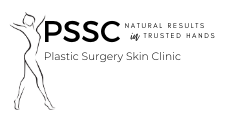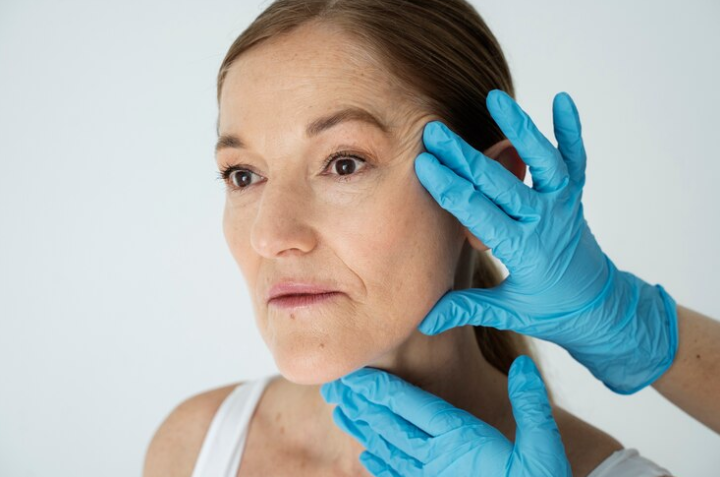The sun is a dazzling powerhouse, fueling life on Earth from a staggering 93 million miles away. But this radiant star has a dark side—it can wreak havoc on your skin and even lead to skin cancer if you’re not careful. Most people underestimate just how little it takes for UV rays to inflict damage. In this post, we’ll unveil 12 eye-opening facts about sunlight, UV rays, and photo-aging that could change how you think about your skin health forever!
1. 90% of Aging Comes from the Sun!
Did you know that approximately 90% of visible skin aging is caused by sun exposure and UV radiation? This staggering statistic underscores the profound influence that the sun has on our skin’s appearance over time. Factors such as fine lines, wrinkles, age spots, and uneven skin tone can often be traced back to years of unprotected sun exposure. While we may associate aging with time, it’s crucial to recognize that much of what we see in the mirror directly results from our sun habits. By prioritizing sun protection now, you can significantly slow down the visible signs of aging and maintain a healthier complexion for years.
2. UV Radiation: A Silent Skin Assassin
UV radiation doesn’t just tan your skin; it can damage DNA in skin cells, potentially leading to skin cancer. When UV rays penetrate the skin, they can cause mutations in the DNA of skin cells, leading to cellular dysfunction and uncontrolled growth—hallmarks of cancer. This damage accumulates over time, meaning that even small amounts of exposure can significantly increase your risk. The effects are often invisible at first, making it easy to underestimate the long-term consequences of sun exposure. Protecting your skin isn’t just about aesthetics; it’s a crucial health imperative that can save lives.
3. UVA vs. UVB: Know Your Rays
UVA rays penetrate deeper into the skin than UVB rays, reaching the dermis and causing premature aging. While UVB rays are primarily responsible for painful sunburn and immediate skin damage, UVA rays are the sneaky culprits behind long-term issues like wrinkles, sagging skin, and pigmentation changes. UVA rays are present year-round and can penetrate through windows, making them a constant threat even when you’re indoors or during cloudy days. Understanding the difference between these types of UV radiation is essential for effective sun protection; choosing broad-spectrum sunscreen that protects against both is vital for maintaining youthful skin.
4. Cloudy Days Aren’t Safe Days
Think you’re safe from sun damage on overcast days? Think again! Up to 80% of UV radiation can pass through clouds, meaning you can still suffer from sun exposure even when it’s gray outside. Many people mistakenly believe they don’t need sunscreen unless it’s sunny, but this misconception can lead to significant cumulative damage over time. Even on cloudy days, harmful UV rays are still at work, penetrating your skin and contributing to photo-aging. Don’t let a little cloud cover fool you—apply that sunscreen daily and make it a non-negotiable part of your skincare routine!
5. Start Protecting Early
Photo aging can kick in as early as your teens or 20s—yes, you read that right! Your choices regarding sun exposure will impact your skin for years to come. Early signs of photo-aging include pigmentation changes, fine lines, and textural irregularities that can develop due to cumulative sun exposure over time. The earlier you adopt protective measures like wearing sunscreen and seeking shade, the better equipped you’ll be to combat these signs as you age. Educating young people about sun safety is crucial for fostering lifelong habits that protect their skin from irreversible damage.
6. Sunscreen: Your Best Friend
Daily broad-spectrum SPF 15+ sunscreen can reduce skin aging by 24%! That’s a significant number for a simple skincare routine step. Regular sunscreen application protects against UVA and UVB rays, significantly lowering the risk of photo-aging and skin cancer. Sunscreen acts as a barrier between your delicate skin and harmful UV rays, preventing immediate damage while also working to protect against long-term effects like wrinkles and discoloration. Make sunscreen part of your morning routine—apply it generously every day before heading outside—and your future self will thank you for investing in this crucial aspect of skincare!
7. Collagen & Elastin: Youth’s Building Blocks
Photo-aging breaks down collagen and elastin fibers in the skin, leading to sagging and a leathery texture over time. Collagen provides structure and firmness to your skin, while elastin is responsible for its elasticity and resilience against stretching and pulling forces. As these essential proteins degrade due to prolonged sun exposure, visible signs of aging become more pronounced—think deep wrinkles, sagging cheeks, and an overall loss of youthful plumpness. Don’t let the sun rob you of these vital components; protecting your skin from UV damage is crucial in maintaining its youthful appearance.
8. The Wrinkle Connection
UVA rays stimulate the production of abnormal elastin in response to sun exposure, which can lead to improper collagen rebuilding and wrinkle formation over time. This means that every time you skip sunscreen or neglect protective measures, you’re inviting those pesky wrinkles to settle in more deeply than before. The process is insidious; what may start as minor lines can quickly evolve into deeper creases if left unchecked. Understanding this connection emphasizes the importance of consistent sun protection for avoiding burns and preserving smooth, youthful-looking skin.
9. HEV Light: The New Skin Enemy?
High-energy visible (HEV) light from our beloved electronic devices may also contribute to skin aging—though not as much as UV radiation. HEV light is emitted from screens on smartphones, tablets, computers, and even LED lighting in our homes. While its impact on photo-aging is still being studied, early research suggests that prolonged exposure may lead to pigmentation changes and accelerated aging effects similar to those caused by UV rays. As we spend more time on screens for work or leisure, we must consider all sources of potential damage to our skin health; incorporating protective measures like screen filters or specialized skincare products may help mitigate these risks.
10. Medication Matters
Certain medications—like antibiotics and birth control pills—can significantly increase your skin’s sensitivity to UV radiation. This heightened sensitivity means that individuals taking these medications may experience adverse reactions such as rashes or burns after minimal sun exposure compared to those who aren’t on such medicines. If you’re on medication that heightens sensitivity or unsure how your prescriptions might affect your skin’s reaction to sunlight, consult your healthcare provider about additional protective measures you should take while enjoying outdoor activities.
11. Chronological Aging vs. Photo-aging
While you can’t stop time or prevent chronological aging entirely—after all, everyone ages—photo-aging is largely preventable with proper sun protection measures! Strategies include wearing protective clothing like hats and long sleeves outdoors, seeking shade during peak sunlight hours (usually between 10 AM and 4 PM), and consistently applying sunscreen before heading outside, regardless of weather conditions. Investing in your skin early will pay off in the long run, helping you maintain healthy-looking skin as you age.
12. Reverse the Damage
If you’ve already experienced photo-aging due to past sun exposure or neglecting proper skincare routines, don’t despair! Treatments like retinoids (which promote cell turnover), chemical peels (which exfoliate damaged layers), and laser resurfacing (which stimulates collagen production) can help rejuvenate your skin’s appearance by addressing issues like fine lines, uneven texture, and pigmentation irregularities caused by years of sun damage. Consulting with a qualified dermatologist will allow you to explore these options explicitly tailored to your needs and concerns; there’s no better time to take proactive steps toward restoring your youthful glow!
Take Charge of Your Skin Health Today!
Understanding the impact of UV exposure on your skin is crucial for long-term health and beauty. To protect your skin, incorporate effective sun protection strategies into your daily routine, including using broad-spectrum sunscreen with at least SPF 15 and reapplying throughout the day, especially outdoors. Seek shade during peak sunlight hours, wear protective clothing, and educate others about sun safety. It’s always possible to start caring for your skin, as adopting these habits can significantly reduce the risk of premature aging and skin damage. Investing in your skin today will yield long-term benefits, and your future self will appreciate the care and attention you give to it. Don’t hesitate to take control of your skincare journey—contact us today to learn how we can support your skin health goals!

